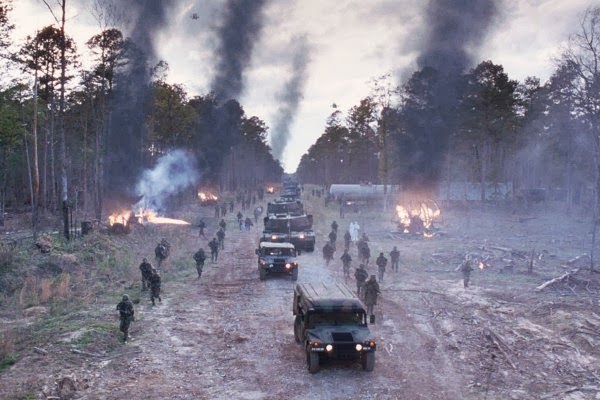I enjoyed Shannon's 2009 posts on her visit to The Stanley Hotel. This is reposted with permission. Visit her blog at:
shannonsweetvalley.com
The
Stanley Hotel
 |
| What a beautiful place. |
Okay, I know I usually only talk
about Sweet Valley, but the Stanley Hotel was amazing and I thought you guys
might be interested in knowing what I’ve been doing this week instead of
updating the blog. Our room was sufficiently spooky, the creepy four-poster bed
so tall there was a little set of wooden steps to get into it. Our room had a
walk-in closet, which I’ve never seen in a hotel. There was a channel that played
Kubrick’s The Shining on a loop.
 |
Kevin the tour guide took this picture for me.
It's at the top of the stairs leading to the bell tower. |
If you are ever in Estes Park for
any reason, you should definitely stop in and take the ghost tour. We learned a
lot and our tour guide, Kevin, was hilarious. We liked him a lot, even though
he thought the name of the bartender in The Shining was Grady (Grady was
the previous caretaker, Lloyd was the bartender and I’m a dork). Anyway, here’s
what we learned:
F. O. Stanley and his wife, Flora,
lived in a mansion in Estes Park but it wasn’t large enough to accommodate all
the guests they wanted to entertain. The hotel was built in 1909, and guests,
all friends of the Stanleys, could come by invitation only. (There’s a Stanley
Museum just down the road from the hotel and they told us this is completely
untrue, it was a regular old hotel, but whatever. We believe in Kevin.) There’s
a building separate from the main hotel. It’s called the Manor House, and this
is where the bachelors stayed when they came to visit, since Flora didn’t think
it was proper for them to stay in the same building with the married folk. The
children stayed on the fourth floor with their nannies and pretty much didn’t
see their parents for the duration of their visit, which usually lasted a whole
summer.
Our tour didn’t take us to the Manor
House, but we explored most of the main building and learned what kind of
paranormal activity happens all around the hotel:
On the fourth floor, people hear
children playing and running around, and children who stay there find their
toys misplaced. The fourth floor is also home to Room 401, which was the
nannies’ break room back in the day. Supposedly, this room is haunted by Lord Dunraven,
a misogynistic jackass who used to own the land on which the Stanley was built.
A woman who stays in that room might feel a hand on her leg or someone touching
her hair.
 |
| Room 217 |
On the second floor, we stood in
front of Room 217, which used to be the Presidential Suite. Room 217 is at the
end of a hallway and the rooms on either side of it, 215 and 219, used to be
part of it. This room is haunted by Elizabeth Wilson (my husband raised his
hand to play Mrs. Wilson when Kevin asked for a volunteer during the ghost
tour). Apparently, Mr. Stanley asked Mrs. Wilson to go light the candles in the
room when the lights went out. The hotel used gas, and when Mrs. Wilson lit her
match, the room blew up. For real. Mr. Stanley felt like crap about this. He
paid all of Mrs. Wilson’s medical bills (yeah, she survived) and said he wanted
her to keep working for him. She stayed and was given a raise every year she
worked there, which she did until she died.
This is, of course, the room in
which Stephen King and his wife stayed when they came to the Stanley.
According
to Kevin, Stephen and Tabitha showed up looking for a room on the last day of
the season when everyone was going home. The manager gave them the keys and
asked them to lock up when they left. After dinner, Tabitha went up to the room
while Stephen went to the bar and had a few drinks. Then he went to the dining
room and found a huge party going on. He tried to talk to the partiers, but
nobody seemed able to see him. I’m not sure I believe that part. It was during
SK’s coke period, after all. He could have seen all manner of strange things.
Anyway, when he went up to the room, Tabitha thanked him for putting away the
luggage, which he of course knew nothing about. At the time, SK had been trying
to write a story about a family trapped in an amusement park. It wasn’t working
out, but after his stay at the Stanley, he moved the whole thing to a haunted
hotel and it became The Shining.
 |
The MacGregor Room
|
The MacGregor dining hall is
something else. This used to be where the Stanleys would feed their guests.
It’s now used for wedding receptions and other events. This room used to be
completely white, but when ABC came to film the miniseries version of The
Shining, they wanted a darker, spookier look. The wood you see in the
picture to the right isn’t actually wood. It’s white plaster airbrushed to look
like wood. And now the Stanley has a deal with ABC: they’re not allowed to
change the appearance of the hotel until “interest in The Shining dies
down.” So basically never.
Our tour took us downstairs to the
basement, where we learned that there really is no foundation for the hotel.
It’s just sort of perched on the mountain rocks. Some people believe it’s the
quartz in the mountain that brings out all the paranormal activity. This is now
called the Stanley Effect.
 |
The pet cemetery
|
That’s where our tour ended. The
next day, my husband and I explored the rest of the property. In the main
building, there’s a music room where Flora used to hang out with the women, and
a billiard room where the men did manly things like smoke cigars and play
billiards. The Stanley has its own concert hall, where Flora Stanley’s ghost is
said to hang out. The Manor House, where the bachelors used to stay, isn’t very
exciting, but Kevin the tour guide said he had an experience in one of the
rooms there. If you walk to the left of the hotel a little way, you might find
a little pet cemetery where some Stanley relatives have buried their pets.
You’ll also find the new Presidential Suite, which appears to be sort of a
duplex.
Bottom line: you should go there. If
you’re ever in the neighborhood, you should just stop by for a while and look
around. It’s a beautiful hotel with a really interesting history, and the Rocky
Mountain National Park is five minutes away.
 |
| Third floor hallway |
 |
| Flora's music room |
 |
| The grand staircase |
 |
A Stanley Steamer car
|

































